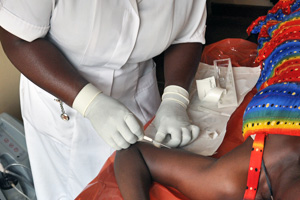Results and discussion: Provision of contraception: Public versus private sector
 One of the key challenges in efforts to assess health workforce access as a determinant of contraceptive use is the range of cadres that can potentially provide different contraceptive methods and the variation between countries in this regard. In the absence of specific information in the DHS on the type of provider by method choice, we explored variation in method source (public versus private sector).
One of the key challenges in efforts to assess health workforce access as a determinant of contraceptive use is the range of cadres that can potentially provide different contraceptive methods and the variation between countries in this regard. In the absence of specific information in the DHS on the type of provider by method choice, we explored variation in method source (public versus private sector).
Public- and private-sector provision of contraception varies by country and by method; however, this analysis revealed a notable distinction between the CPR-improved and CPR-stagnant countries (Figure 8). Ten to fifteen years ago, all of the CPR-improved countries had higher levels of public-sector provision than the CPR-stagnant countries, with the exception of Senegal. In addition, the CPR-improved countries all experienced an increase in public-sector provision relative to the private sector in the observed time period. By contrast, other than Senegal, the CPR-stagnant countries experienced declining or stable proportions of public-sector provision of contraception.
Furthermore, we identified differences in the type of private-sector source between the two groups. Specifically, the proportion of private-sector provision of contraception that is from a pharmacy is much higher among CPR-stagnant countries than CPR-improved countries, whereas the major private-sector sources among the CPR-improved countries are largely medical facilities such as hospitals and clinics and/or nongovernmental organizations. Additionally, the CPR-stagnant countries have higher proportions of contraceptive provision via shops, vendors, and friends/family (data not shown).
- Health workforce determinants at play? Relatively high levels of public-sector provision may be an indication of political will and favorable government support for developing a strong health workforce that is able to generate demand for, as well as expand and improve access to, a diverse mix of contraceptive methods. Additionally, differences in the type of private-sector source may be a result of method preference, as well as availability and affordability of certain methods, and the level of health personnel required to provide the various methods.

